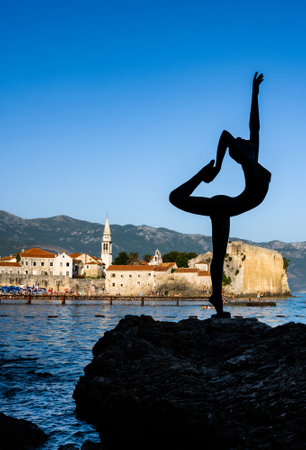Roots of Yoga in Britain
The journey of yoga into British society is a fascinating tale woven through the threads of history and cultural exchange. The roots can be traced back to the colonial era, when British officials, scholars, and travellers encountered Indian traditions during their time in South Asia. Early interest was often academic or exotic in nature, with yoga seen as an intriguing curiosity rather than a mainstream practice. Influential figures brought back not only stories but also books and artefacts that piqued public interest among the British elite. As these early encounters grew, so did a gradual appreciation for the philosophical depth and holistic health benefits that yoga offered. Through salons, universities, and private clubs, the seeds of yoga began to take root in British soil, setting the stage for its evolution from an imported novelty to a cherished aspect of wellness culture.
2. Mainstream Acceptance and Adaptation
Yoga’s journey in Britain is a fascinating tale of transformation from an obscure Eastern practice to a celebrated component of daily wellbeing. In the early 20th century, yoga was largely considered exotic, its teachings accessible only to small groups of spiritual seekers or intellectuals. However, as British society evolved and wellness trends gained momentum after the 1960s, yoga began to find broader appeal, gradually shedding its niche status.
Today, yoga is woven into the fabric of British life—embraced by people from all walks of life and age groups. This mainstream acceptance has been shaped by both cultural curiosity and a practical desire for balance amidst modern stresses. The British approach to yoga reflects a gentle adaptation: rather than strictly adhering to traditional Indian lineages, many studios and instructors blend classic postures with mindfulness practices, sometimes infusing classes with elements such as breathwork or even local music.
Adaptations to Suit British Lifestyles
The evolution of yoga in Britain has involved thoughtful adaptation to fit local lifestyles and expectations. Urban professionals often attend lunchtime classes for stress relief, while community centres offer gentle sessions tailored for older adults. Yoga retreats are frequently set in the tranquil British countryside, providing restorative escapes without the need for long-haul travel.
Key Differences: Traditional vs. British Yoga
| Aspect | Traditional Indian Yoga | British Adaptation |
|---|---|---|
| Class Structure | Longer sessions focusing on philosophy, meditation, and physical postures | Shorter, flexible classes prioritising physical health and relaxation |
| Cultural Elements | Sanskrit terminology, chanting, and rituals | Use of English terms; emphasis on inclusivity and accessibility |
| Setting | Ashrams or spiritual centres | Gyms, studios, workplaces, community halls |
| Purpose | Spiritual growth and self-realisation | Mental wellbeing, fitness, stress management |
A Welcoming Community Spirit
This locally nuanced approach has fostered a welcoming environment where everyone—from beginners to seasoned practitioners—can experience the nourishing benefits of yoga. As yoga continues to flourish across Britain, it remains an ever-adaptable practice: gently supporting individuals on their journey towards holistic health while reflecting the unique character of British culture.

3. The British Yoga Experience Today
In contemporary Britain, yoga has woven itself into the daily fabric of life, reflecting both tradition and innovation. Across bustling cities like London, Manchester, and Edinburgh, as well as in quieter rural communities, yoga is practiced by people of all ages and backgrounds. This broad appeal is partly due to the diverse range of styles now available. From classic Hatha and Iyengar classes that emphasise alignment and mindfulness, to dynamic Vinyasa flows and restorative Yin yoga, there is something for everyone seeking physical wellness or a moment of calm amidst modern lifes demands.
Popular Styles and Trends
While traditional forms remain popular, the UK has also embraced more contemporary trends. Hot yoga studios have flourished, offering an invigorating experience especially during the colder months. Meanwhile, classes such as aerial yoga and yoga with live music have found a niche among younger practitioners looking for novel ways to engage with the practice. Mindfulness-based approaches, often influenced by British wellness culture, focus on holistic health rather than just physical fitness.
Who Practices Yoga in the UK?
The demographic landscape of British yoga is wonderfully diverse. While women continue to make up a significant proportion of attendees, there has been a noticeable increase in male practitioners over recent years. Many older adults are finding gentle yoga beneficial for mobility and balance, while young professionals turn to yoga for stress relief and improved mental clarity. Yogas integration into schools and workplaces also highlights its growing role in supporting wellbeing across all stages of life.
The Evolving Role of Studios and Digital Platforms
Yoga studios remain at the heart of local communities, fostering connection and support. However, the rise of gyms offering group yoga sessions has helped make the practice more accessible than ever before. In addition, online platforms—whether live-streamed classes or video libraries—have opened up new possibilities for home practice. This digital shift gained particular momentum during lockdowns, allowing people to maintain their routines and access teachers from across the UK and beyond.
Ultimately, today’s British approach to yoga honours its ancient roots while adapting gracefully to contemporary needs. Whether practised in a cosy studio in Cornwall or via an app in a London flat, yoga continues to nurture both body and mind for a wide spectrum of Britons.
4. Wellbeing, Community, and Lifestyle
Yoga in the UK has found its place as more than a physical activity; it is now an integral part of the British approach to wellbeing and community. The British value for moderation, balance, and mindfulness fits seamlessly with the holistic philosophy of yoga. Many Britons are turning to yoga not only for personal health but also to foster a sense of belonging and connection within their communities.
Mindfulness is a core aspect of both traditional British wellness practices and contemporary yoga classes across the country. In bustling cities like London, Manchester, and Edinburgh, yoga studios offer classes that emphasise mental clarity and emotional resilience—qualities highly regarded in British culture. Practitioners are encouraged to cultivate awareness in everyday life, echoing the classic British sentiment of “keeping calm and carrying on.”
The social aspect of yoga also aligns with longstanding British traditions of community-building. Whether it’s through group classes at local leisure centres or outdoor sessions in public parks, yoga provides opportunities for people from all walks of life to come together. This communal experience enhances social cohesion and supports mental health—a topic receiving increasing attention across the UK.
| British Value | How Yoga Complements |
|---|---|
| Mindfulness | Encourages present-moment awareness; reduces stress |
| Balance | Promotes harmony between body, mind, and lifestyle |
| Community Spirit | Fosters inclusivity through group practice and shared goals |
| Lifestyle Integration | Adaptable to busy schedules; supports holistic wellbeing |
This integration of yoga into daily routines highlights a shift towards preventative health and self-care within British society. From corporate wellness programmes offering lunchtime yoga sessions to community groups supporting vulnerable populations with gentle movement classes, there is a growing recognition that physical activity can be both accessible and enjoyable.
Overall, the British embrace of yoga reflects a desire for balanced living—a way to address modern life’s stresses while nurturing both individual wellness and community bonds. Through this approach, yoga has become not just a practice but a meaningful component of contemporary British lifestyle.
5. The Natural Connection: Outdoor and Regional Yoga Traditions
One of the most distinctive features of the British approach to yoga is the natural affinity for practising in outdoor settings. Across the UK, you will find yoga enthusiasts unrolling their mats in city parks, on verdant village greens, or even along dramatic coastal cliffs. This connection to the natural world reflects a wider British appreciation for green spaces and a cultural tradition of seeking wellness in nature. In cities such as London, Manchester, and Edinburgh, community groups regularly organise sunrise or sunset yoga sessions in public parks, creating inclusive spaces that foster both physical health and a sense of belonging.
Beyond urban environments, the countryside offers its own unique backdrop for yoga practice. The rolling hills of the Lake District, the mystical landscapes of Cornwall, and the tranquil shores of Scotland’s lochs have all become popular venues for yoga retreats. These regional gatherings often incorporate local traditions—such as mindful walks through bluebell woods or meditative pauses by ancient stone circles—highlighting how place and heritage inform British yoga experiences.
Seaside towns also play a special role in shaping regional yoga identities. Coastal yoga festivals from Brighton to Northumberland make use of Britain’s long stretches of beach and ever-changing weather. Practising yoga with the sound of waves and the scent of salt air enhances a holistic sense of wellbeing, blending movement with mindfulness in tune with nature’s rhythm.
Regional diversity further influences how yoga is celebrated across the UK. In Wales, bilingual classes honour both English and Welsh speakers; in Northern Ireland, historic gardens and castles provide unique venues that weave local history into modern practice. Community-led events often feature locally sourced refreshments—think herbal teas from Devon or Scottish oatcakes—emphasising a natural lifestyle that extends beyond the mat.
This deep-rooted connection to place underscores the British tendency to see yoga not just as an individual pursuit but as an opportunity to nurture both community spirit and harmony with the environment. Whether under ancient oak trees or on windswept beaches, British practitioners continue to shape a uniquely grounded approach to yoga—one that honours both tradition and innovation within their natural surroundings.
6. Looking Forward: The Future of Yoga in Britain
As we reflect on the journey of yoga across the British Isles, it is natural to consider what lies ahead for this ancient practice in a modern and ever-evolving society. The next chapter of yoga in the UK appears promising, yet it will be shaped by emerging trends, contemporary challenges, and the growing desire for holistic wellbeing.
Inclusivity: Yoga for Every Body
One of the most notable shifts in recent years is the movement towards making yoga more inclusive and accessible. Traditionally seen as the domain of certain groups, there is a growing commitment among British instructors and studios to break down barriers—be they physical, cultural, or financial. From community-based classes to online offerings and adaptations for those with disabilities or chronic health conditions, yoga in Britain is becoming increasingly diverse. This trend not only welcomes newcomers but also enriches the practice for everyone involved.
Sustainability: Mindful Practice for People and Planet
Sustainability has become a guiding principle within many wellness communities, and the British approach to yoga is no exception. There is heightened awareness around eco-friendly props, sustainable studio operations, and conscious consumption. Many practitioners are choosing locally produced equipment or reusable mats, while studios seek to reduce their environmental impact through energy-efficient spaces and waste reduction initiatives. This mindful approach extends beyond the mat, inspiring yogis to adopt more sustainable habits in daily life—a reflection of the interconnectedness that yoga teaches.
Holistic Living: Integrating Yoga into Everyday Life
Beyond physical postures, there is a renewed interest in embracing yoga as a comprehensive lifestyle. British yogis are exploring nutrition inspired by Ayurvedic principles, mindfulness practices that complement their routines, and nature-based retreats that offer respite from urban life. This holistic perspective supports mental health, emotional resilience, and overall vitality—qualities that resonate deeply in today’s fast-paced world.
Opportunities and Challenges Ahead
The future offers exciting opportunities for innovation—think digital platforms connecting rural communities, collaborations with healthcare providers for therapeutic yoga interventions, and festivals celebrating both tradition and creativity. However, challenges remain: ensuring quality teaching standards, avoiding commercialisation that dilutes authenticity, and fostering genuine community spirit amidst rapid growth. As Britain continues to embrace yoga’s evolving landscape with openness and care, it seems well poised to nurture a culture where everyone can experience the profound benefits of this time-honoured practice.


